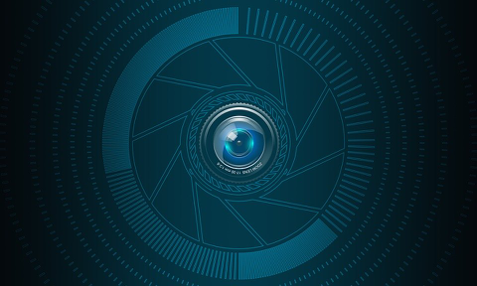
COVID-19 has generated an important debate around the role of surveillance technologies in our lives. Several articles have stood out to me: some noting its advantages, others cautioning us against its risks. On March 20, The Conversation published a piece titled “Coronavirus: South Korea’s success in controlling disease is due to its acceptance of surveillance” (https://theconversation.com/coronavirus-south-koreas-success-in-controlling-disease-is-due-to-its-acceptance-of-surveillance-134068) by Jung Won Sonn, Associate Professor in Urban Economic Development at University College London.
On April 3, Amnesty published “COVID-19, surveillance and the threat to your rights” (https://www.amnesty.org/en/latest/news/2020/04/covid-19-surveillance-threat-to-your-rights/). The usual arguments highlight the hard choice between information exposure and movement restriction, the difficult balance between safety and liberty. Also, opinions are shared on how tracking measures could be useful for the emergencies of the moment but might pose serious threats to privacy if they were to become “normal” or are taken for granted in the long run.
The subject of surveillance is currently hot with the raging pandemic but it has been around for quite a while—roughly, I suppose, since Edward Snowden’s NSA whistleblowing incident in 2013. How have artists been responding to the issue? I would like to discuss two that I have ended up discovering: David Spriggs (UK, Canada) and Marcus Mårtenson (Sweden). The first examines the phenomenon as executed by the state while the second unpacks it as employed by non-state actors (eg, tech companies). Both bring to the fore the psychology behind the surveillance mechanisms and the emotions and dispositions they are designed to engender— fear and addiction, respectively—to accomplish their objectives.

In Logic of Control, Vancouver-based British-Canadian artist David Spriggs creates a representation of the “Panopticon” (https://en.wikipedia.org/wiki/Panopticon), an ultra-efficient prison designed by the English philosopher and social theorist Jeremy Bentham (1748-1832). The artist uses transparent material as it is taken as an allusion to the values of openness and democracy in the field of state architecture. Within the Panopticon, a guard could keep an eye on every inmate from a central observation tower. The inmates could not see the guard or each other.
Spriggs explains on his website: “In many ways, this is the beginning of mass surveillance apparatuses and the idea that people will govern themselves strictly on the notion that their actions are being watched. Closed-circuit television (CCTV) and other contemporary surveillance cameras operate on the same principle as the Panopticon, the theory of imposed self-governance.”
The second artist chosen, Marcus Mårtenson, concentrates on surveillance by tech corporations and social media platforms—Facebook, Google, Twitter, Instagram, etc. He is inspired by the research conducted by Harvard professor Shoshana Zuboff, author of The Age of Surveillance Capitalism (2018).
Mårtenson’s painting Hot Trigger looks into the ways in which non-state giants with unimaginable magnitudes of power deliberately target our mental weaknesses (there are courses at Stanford, Mårtenson asserts, that teach this in strict detail), trap us into spending more and more time online so that we may input more and more data about ourselves (which could finally be sold to advertisers and presented back to us to manipulate our behaviour). The platforms numb us and make us slaves to likes and comments on the photos we post or the statuses we share. The refresh or replay button is purposefully rendered ever-accessible. One new thumbs-up or email, and the chemicals in our brains register it as a reward, and then, seek more rewards.
Hot Trigger exhibits other aspects of online initiatives—constant interruption and tracking, polarised opinions and simplistic views, the curated and only partially real self, too many options regarding potential mates—and Mårtenson arranges all of them as icons on a phone screen.

Spriggs and Mårtenson invite us to ponder on various techniques of surveillance in practice today. They make clear the processes and philosophies and then, incite to us complete the narrative. In each case, we are made to ask: What are the consequences? What is the worst that could come out of this? What changes could be made to the mechanisms to make them more humane?
Both artists leave us with certain features to look out for, which can help us identify red flags, recognise the point where technology has been taken too far. For Spriggs it is “centralisation” and “transparency”. For Mårtenson, it is “design” and “behavioural modification”.
The questions that we might raise under each pointer (with respect to both state and non-state actors) are as follows:
- Centralisation: Who has decision-making power? To what extent it is distributed or concentrated? Are separate companies being bought off by one giant conglomerate? Are local administration units increasingly losing identity before some inaccessible national locus of scrutiny / are individual countries being subsumed into some elusive supranational entity?
- Transparency: How much information about ourselves can we hide – are allowed to hide? Is it necessary to share every single location we’re at or every single interest? If a certain search engine stores our data, what are the alternatives available?
- Design: Why are apps structured the way they are? If they exploit us, how can we outwit them and minimise their negative impact without abandoning them completely?
- Behavioural modification: What kind of effects are platforms like Facebook or Instagram having on our thoughts, feelings and actions? How much time do we end up spending on them on an average when we open them? And how many times do we open them and for what exactly?
Surveillance has its merits. As Spriggs points out, the Panopticon philosophy is used in CCTVs—and we can all agree, they can help reduce crime or identify criminals. Location tracking, as displayed by Mårtenson, can be used to ensure safety and security, rescuing someone who has been lost or abducted or in the middle of a calamity. But the steps mentioned above, executed regularly, may enable us to resist the dangers of surveillance, if someday some technology behemoth ends up in the wrong hands.
Written by Tulika Bahadur.

